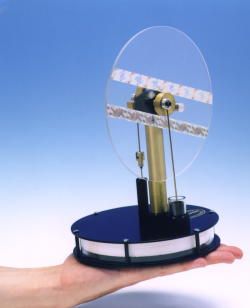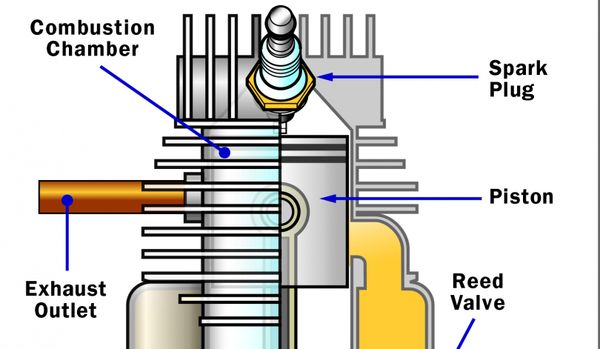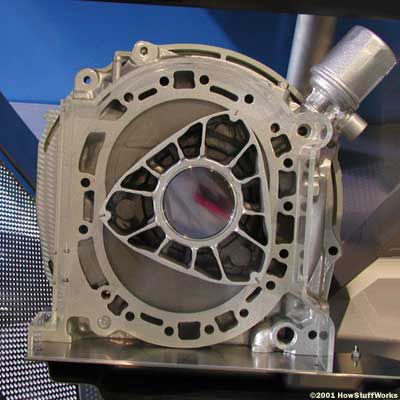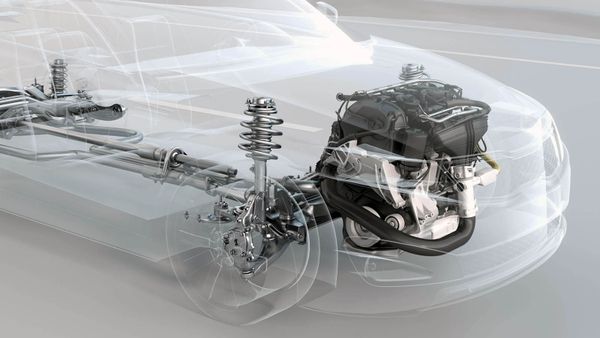The key principle of a Stirling engine is that a fixed amount of a gas is sealed inside the engine. The Stirling cycle involves a series of events that change the pressure of the gas inside the engine, causing it to do work.
There are several properties of gasses that are critical to the operation of Stirling engines:
- If you have a fixed amount of gas in a fixed volume of space and you raise the temperature of that gas, the pressure will increase.
- If you have a fixed amount of gas and you compress it (decrease the volume of its space), the temperature of that gas will increase.
Let's go through each part of the Stirling cycle while looking at a simplified Stirling engine. Our simplified engine uses two cylinders. One cylinder is heated by an external heat source (such as fire), and the other is cooled by an external cooling source (such as ice). The gas chambers of the two cylinders are connected, and the pistons are connected to each other mechanically by a linkage that determines how they will move in relation to one another.
There are four parts to the Stirling cycle. The two pistons in the animation above accomplish all of the parts of the cycle:
- Heat is added to the gas inside the heated cylinder (left), causing pressure to build. This forces the piston to move down. This is the part of the Stirling cycle that does the work.
- The left piston moves up while the right piston moves down. This pushes the hot gas into the cooled cylinder, which quickly cools the gas to the temperature of the cooling source, lowering its pressure. This makes it easier to compress the gas in the next part of the cycle.
- The piston in the cooled cylinder (right) starts to compress the gas. Heat generated by this compression is removed by the cooling source.
- The right piston moves up while the left piston moves down. This forces the gas into the heated cylinder, where it quickly heats up, building pressure, at which point the cycle repeats.
The Stirling engine only makes power during the first part of the cycle. There are two main ways to increase the power output of a Stirling cycle:
- Increase power output in stage one - In part one of the cycle, the pressure of the heated gas pushing against the piston performs work. Increasing the pressure during this part of the cycle will increase the power output of the engine. One way of increasing the pressure is by increasing the temperature of the gas. When we take a look at a two-piston Stirling engine later in this article, we'll see how a device called a regenerator can improve the power output of the engine by temporarily storing heat.
- Decrease power usage in stage three - In part three of the cycle, the pistons perform work on the gas, using some of the power produced in part one. Lowering the pressure during this part of the cycle can decrease the power used during this stage of the cycle (effectively increasing the power output of the engine). One way to decrease the pressure is to cool the gas to a lower temperature.
This section described the ideal Stirling cycle. Actual working engines vary the cycle slightly because of the physical limitations of their design. In the next two sections, we'll take a look at a couple of different kinds of Stirling engines. The displacer-type engine is probably the easiest to understand, so we'll start there.



